Home>diy>Building & Construction>How To Buy A Multi-Unit Apartment Building
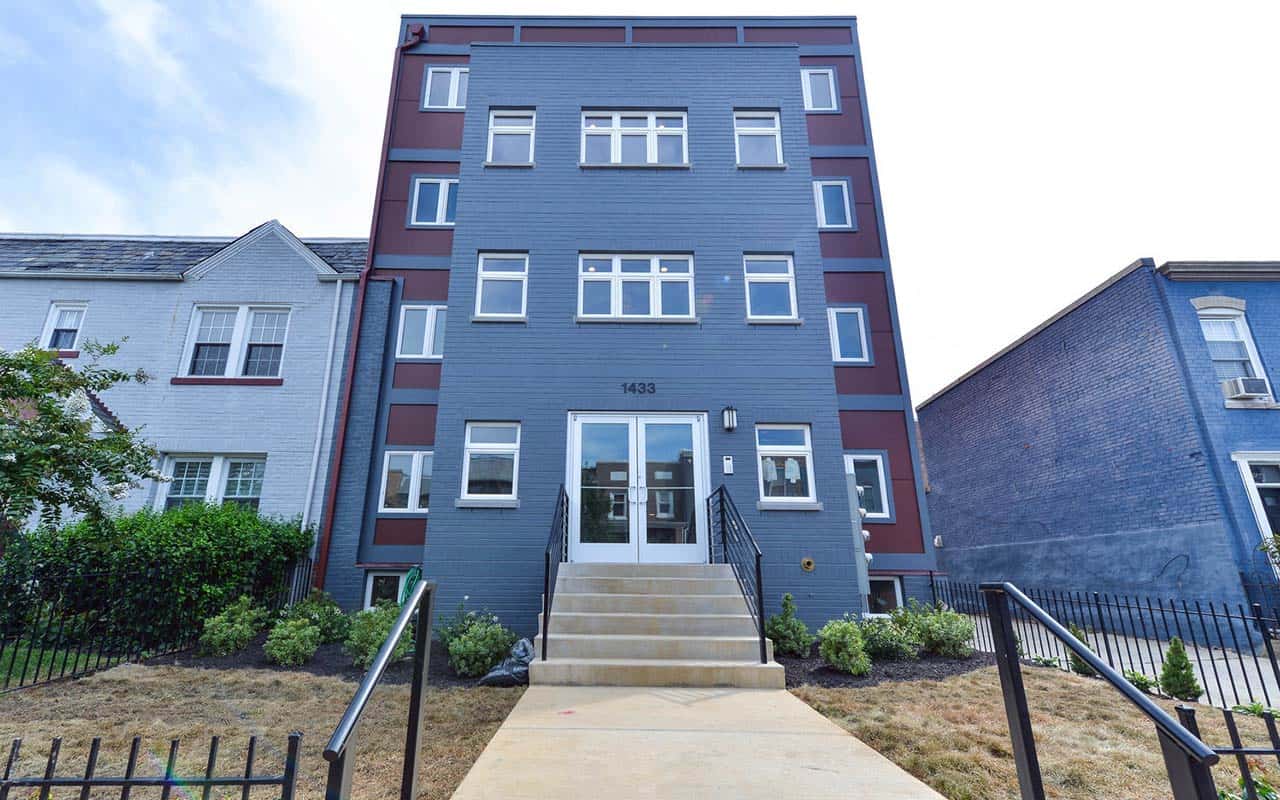

Building & Construction
How To Buy A Multi-Unit Apartment Building
Modified: December 7, 2023
Learn the step-by-step process of buying a multi-unit apartment building. Expert advice on building construction and investment strategies.
(Many of the links in this article redirect to a specific reviewed product. Your purchase of these products through affiliate links helps to generate commission for Storables.com, at no extra cost. Learn more)
Introduction
Welcome to the world of multi-unit apartment buildings! If you’re looking to expand your real estate investment portfolio or venture into the lucrative rental market, buying a multi-unit apartment building can be a smart and profitable move. In this article, we will guide you through the process of acquiring a multi-unit apartment building, from understanding the property to closing the deal and beyond.
Multi-unit apartment buildings, also known as multifamily properties, are residential buildings that contain two or more units. These properties can range from small duplexes to large apartment complexes with dozens of units. They provide an excellent option for generating rental income and building long-term wealth in real estate. Additionally, they offer potential tax benefits and the ability to leverage your investment.
When considering purchasing a multi-unit apartment building, it’s crucial to start by evaluating your investment goals and financial resources. This will help determine the size and type of property that aligns with your objectives. Do you want to generate passive income through rental payments? Are you looking for long-term appreciation and wealth creation? Understanding your goals will provide clarity in your search for the right property.
Researching the real estate market is a crucial step in the process. Identify potential locations that have strong rental demand and a stable housing market. Analyze market trends, vacancy rates, and demographics to ensure there is a demand for rental housing in the area. Factors such as population growth, employment opportunities, and proximity to amenities like schools and transportation can contribute to the desirability and profitability of your investment.
With a clear understanding of your goals and the market, you can then start searching for suitable multi-unit apartment buildings. Real estate agents who specialize in commercial or multifamily properties can be excellent resources. They have access to listings, market data, and can help you navigate the complexities of the buying process.
Additionally, the internet has made it easier than ever to find multi-unit apartment buildings for sale. Online platforms, classified websites, and real estate marketplaces can provide a wealth of options to explore. It’s essential to conduct thorough property inspections to assess the building’s condition, any necessary repairs or renovations, and the overall tenant satisfaction.
Key Takeaways:
- When buying a multi-unit apartment building, thorough research, strategic advertising, and proactive maintenance are crucial for success. Effective tenant selection and clear communication contribute to a positive investment experience.
- Understanding the real estate market, calculating return on investment, and negotiating terms are essential steps in the buying process. Hiring a real estate attorney and completing necessary paperwork ensure a smooth closing.
Read more: How Much To Buy An Apartment Building
Understanding Multi-Unit Apartment Buildings
Before diving into the process of buying a multi-unit apartment building, it is important to have a solid understanding of what these properties are and the different types available. Let’s explore the definition and characteristics of multi-unit apartment buildings, as well as the various types you may come across.
Definition and Characteristics
A multi-unit apartment building is a residential property that consists of two or more units. Each unit is a separate living space with its own entrance, kitchen, bathroom, and sometimes additional rooms. These units are rented out to tenants, generating a steady stream of rental income for the building owner.
One of the key characteristics of multi-unit apartment buildings is the potential for higher cash flow compared to single-family homes. With multiple units, landlords can collect rent from several tenants, increasing their overall rental income. This makes multi-unit apartment buildings an attractive investment option for individuals looking to generate passive income and build long-term wealth.
Another advantage of multi-unit apartment buildings is the ability to leverage your investment. Lenders are more willing to provide financing for these types of properties due to their income-producing nature. This allows investors to purchase larger properties and grow their portfolio at a faster rate.
Types of Multi-Unit Apartment Buildings
Multi-unit apartment buildings can vary in size, structure, and tenant population. Here are some of the most common types you may come across:
- Duplex: A duplex is a two-unit building, with each unit typically mirroring the other in layout and size. It’s an excellent option for investors starting in the multi-family property market.
- Triplex: A triplex consists of three units within the same building. It offers slightly more income potential than a duplex.
- Quadplex: Also known as a fourplex, a quadplex contains four units in a single building. This type of property is often favored by investors looking for increased rental income and the opportunity to live in one of the units while renting out the others.
- Apartment Complex: An apartment complex typically consists of multiple buildings, each containing multiple units. These complexes can range from small buildings with a handful of units to large-scale developments with dozens or even hundreds of units.
Within the world of apartment complexes, you may also come across terms like garden-style, mid-rise, or high-rise buildings. Garden-style apartments are usually low-rise buildings with units spread out among landscaped grounds. Mid-rise and high-rise buildings, on the other hand, are taller structures with multiple floors.
Each type of multi-unit apartment building has its own advantages and considerations. It’s essential to evaluate your investment goals, budget, and management capabilities when deciding which type of property is the right fit for you.
Assessing Your Needs and Budget
Before diving into the process of buying a multi-unit apartment building, it is crucial to assess your needs and budget. Understanding your investment goals and evaluating your financial resources will help you make informed decisions and set realistic expectations. Let’s explore how to determine your investment goals and evaluate your financial resources.
Determining Your Investment Goals
The first step in assessing your needs is to determine your investment goals. Ask yourself what you hope to achieve with your multi-unit apartment building investment. Are you looking for passive income through rental payments? Do you aim for long-term appreciation and wealth creation? Understanding your goals will guide your investment strategy and help you focus on properties that align with your objectives.
Consider factors such as the desired level of involvement in property management, cash flow expectations, and potential exit strategies. Are you planning to be a hands-on landlord, or do you prefer a more passive investment where you hire property management services? Identifying your preferred level of involvement will help you choose properties that fit your management style.
Additionally, consider your timeline for investment returns. Are you looking for short-term gains through property appreciation, or are you in it for the long haul, focusing on steady rental income over time? Having a clear understanding of your investment goals will guide your property search and decision-making process.
Evaluating Financial Resources
Once you have determined your investment goals, it is essential to evaluate your financial resources. Buying a multi-unit apartment building is a significant financial commitment, and a realistic assessment of your financial capabilities will ensure you are prepared for the investment.
Start by assessing your personal finances, including your savings, income, and creditworthiness. This will help determine how much you can comfortably invest and the amount of financing you may need. Keep in mind that lenders typically require a higher down payment and may have stricter qualifying criteria for multi-unit apartment buildings compared to traditional residential properties.
Consider your available liquid assets, such as cash reserves or investment portfolios that can be used for a down payment or initial investment. Evaluate your ability to secure financing and obtain pre-approval from lenders. Consulting with a financial advisor or mortgage professional can provide valuable insights into your financial position and options for financing the purchase.
In addition to the initial purchase cost, take into account the ongoing expenses associated with owning and maintaining a multi-unit apartment building. This includes property taxes, insurance, utilities, maintenance costs, and potential vacancies. Evaluate the potential rental income and cash flow of the property to ensure it aligns with your financial goals.
By accurately assessing your needs and budget, you will be well-equipped to make informed decisions when searching for a multi-unit apartment building that fits your investment objectives and financial capabilities.
Read more: How Do You Buy An Apartment Building
Researching the Real Estate Market
One of the critical steps in buying a multi-unit apartment building is researching the real estate market. Understanding market conditions, trends, and demographics will help you identify potential locations and make informed investment decisions. Let’s explore how to research the real estate market by identifying potential locations and analyzing market trends and demographics.
Identifying Potential Locations
The first step in researching the real estate market is to identify potential locations for your investment. Look for areas that have strong rental demand and a stable housing market. Consider factors such as population growth, employment opportunities, infrastructure development, and amenities like schools, shopping centers, and transportation options. These factors can contribute to the desirability and profitability of your investment.
Consult local real estate agents, property managers, and other industry professionals who have firsthand knowledge of the market. They can provide insights into emerging neighborhoods, up-and-coming areas, or established rental markets. Additionally, attend local real estate investment clubs or networking events to connect with experienced investors and gain valuable insights.
Consider the type of tenants you want to attract. Are you targeting young professionals, families, or retirees? Research neighborhoods that cater to your target market and offer amenities or features that are in high demand by those demographics. For example, if you’re targeting young professionals, proximity to job centers and trendy neighborhoods with restaurants and nightlife may be important.
Analyzing Market Trends and Demographics
Once you have identified potential locations, it’s essential to analyze market trends and demographics. Look for areas with a history of steady or increasing property values and low vacancy rates. A thriving rental market signifies strong demand and provides a higher chance of steady rental income.
Research market indicators such as average rental rates, occupancy rates, and rental price appreciation. These metrics can give you a sense of the rental market’s health and potential for growth. Analyze data from local housing authorities, property management companies, or online real estate platforms to gather this information.
Demographic analysis is also crucial in researching the real estate market. Look for areas with population growth or shifts in demographics that align with your target tenant market. Consider factors such as employment opportunities, educational institutions, healthcare facilities, and community amenities that can attract and retain tenants in the area.
Furthermore, pay attention to any future development plans or infrastructure projects in the area, as they can have a significant impact on property values and rental demand. Municipal websites, local news outlets, and economic development agencies are excellent sources to gather information about upcoming projects.
By thoroughly researching the real estate market, identifying potential locations, and analyzing market trends and demographics, you can make informed decisions and narrow down your search to areas that offer the best investment opportunities for buying a multi-unit apartment building.
Finding Suitable Properties
Once you have identified potential locations and conducted research on the real estate market, the next step is to find suitable properties for your multi-unit apartment building investment. Finding the right property involves networking with real estate agents and exploring online listings and classifieds. Let’s explore these methods in more detail.
Networking with Real Estate Agents
One of the best ways to find suitable properties is by networking with real estate agents who specialize in commercial or multifamily properties. These professionals have a deep understanding of the local market and can provide valuable insights and access to off-market and upcoming listings.
Start by researching and contacting real estate agencies or agents who have a strong presence in your target market. Schedule meetings or phone calls to discuss your investment goals and criteria. Provide them with specific details such as the number of units you’re looking for, desired location, budget, and any other preferences or requirements you have.
Building a good relationship with real estate agents is important, as they can keep you informed about new listings, price reductions, and market trends. They can also assist in arranging property viewings and guiding you through the offer and negotiation process.
Scouting Online Listings and Classifieds
Another valuable resource for finding suitable properties is by scouting online listings and classified websites. Many online platforms cater specifically to commercial and multifamily properties, making it easier to filter and search for properties that meet your criteria.
Popular real estate websites often have dedicated sections or filters for commercial properties or multifamily buildings. Utilize these filters to narrow down your search to your desired location, property size, price range, and other preferences. Regularly check these websites for new listings, and set up alerts or notifications to stay updated on new properties that match your criteria.
In addition to mainstream real estate platforms, don’t overlook niche websites or industry-specific portals that cater to commercial real estate or multifamily properties. These websites may offer specialized features and a deeper inventory of properties that may not be available on more general platforms.
Classified websites, both local and national, can also be a valuable resource for finding multi-unit apartment buildings for sale. Look for sections dedicated to real estate or commercial properties, as well as specific categories like investment properties or apartment buildings.
When using online listings and classifieds, it’s important to carefully review property details, photos, and any additional information provided. Reach out to the listing agent or owner to gather more information, schedule property viewings, and ask any questions you may have.
By networking with real estate agents and exploring online listings and classifieds, you can expand your reach and increase your chances of finding suitable multi-unit apartment buildings that align with your investment goals and criteria.
Conducting Property Inspections
Once you have identified potential multi-unit apartment buildings that meet your criteria, the next step is to conduct property inspections. This crucial step allows you to assess the building’s condition, evaluate amenities, and gauge tenant satisfaction. Conducting thorough inspections will help you make informed decisions and ensure you are investing in a property that aligns with your goals. Let’s explore the key aspects to consider during property inspections.
Assessing the Building’s Condition
One of the primary objectives of a property inspection is to assess the overall condition of the building. Start by examining the exterior of the building, looking for signs of wear and tear, structural issues, or any necessary repair work. Pay attention to the condition of the roof, windows, doors, and siding. Look for cracks in the foundation and any signs of water damage.
Next, move on to the interior of the building. Inspect each unit thoroughly, checking for any damage, leaks, or plumbing issues. Look for signs of pests or infestation, such as rodent droppings or termite damage. Assess the condition of walls, flooring, and fixtures. Note any maintenance or repair work that may be required.
During the inspection, assess the functionality of heating, ventilation, and air conditioning systems. Check electrical outlets and switches to ensure they are in good working condition. Inspect the condition of the building’s common areas like hallways, staircases, and laundry facilities.
Consider hiring a professional inspector to conduct a more detailed assessment of the property. They can provide a comprehensive report detailing the condition of the building and any potential issues that may require attention.
Read more: How To Value Apartment Building
Evaluating Amenities and Tenant Satisfaction
In addition to assessing the building’s condition, it is important to evaluate the amenities and gauge tenant satisfaction. Assess the quality and condition of amenities such as parking areas, common areas, landscaping, or recreational facilities like a swimming pool or fitness center.
Consider the availability and condition of essential utilities, such as water, electricity, and Wi-Fi connectivity. Review the maintenance history of the property to determine if there have been any recurring issues or challenges.
If possible, speak with current tenants to understand their level of satisfaction with the property. A satisfied tenant base can contribute to the success and profitability of your investment. Ask about their experience living in the building, the responsiveness of the property management, and any concerns or issues they may have.
As you evaluate amenities and tenant satisfaction, consider how these factors align with your target tenant market. Are the amenities attractive and appealing to your intended tenants? Does the property’s condition and tenant feedback meet your expectations for providing a positive living experience?
By conducting thorough property inspections and assessing the building’s condition, amenities, and tenant satisfaction, you can gain valuable insights into the investment potential of the multi-unit apartment building. This information will help you make informed decisions and ensure you are investing in a property that meets your goals and expectations.
Performing Due Diligence
Performing due diligence is a critical step in the process of buying a multi-unit apartment building. This comprehensive review ensures that you have a clear understanding of the property’s financials, lease agreements, and overall performance. Performing due diligence involves reviewing financial statements and tax records, as well as verifying lease agreements and rent rolls. Let’s explore these essential components of due diligence.
Reviewing Financial Statements and Tax Records
One of the first steps in due diligence is reviewing the financial statements and tax records of the multi-unit apartment building. This includes income statements, balance sheets, and cash flow statements. These statements provide valuable insights into the property’s revenue, expenses, and profitability.
Examine the property’s operating income, which includes rental income from tenants and any other sources such as laundry facilities or parking fees. Analyze the operating expenses, which encompass costs such as property management fees, maintenance and repairs, insurance, property taxes, utilities, and any other relevant expenses. Calculate the net operating income (NOI) by subtracting the operating expenses from the operating income.
Reviewing the tax records will give you a clearer understanding of the property’s tax history, any tax liabilities, and potential deductions. Verify that the property owner has been compliant with tax obligations and that there are no outstanding tax issues that could affect your investment.
Consulting with an accountant or financial advisor can provide valuable insights and guidance during the review process. They can help you analyze the financial statements, identify any discrepancies or concerns, and assess the property’s financial performance. They may also be able to advise on potential tax implications and strategies for optimizing your investment.
Verifying Lease Agreements and Rent Rolls
Another crucial aspect of due diligence is verifying lease agreements and rent rolls. A rent roll is a document that provides detailed information about the current tenants, their lease terms, and the corresponding rental income.
Review the lease agreements to ensure they are legal, valid, and in line with local regulations. Confirm that all necessary clauses, such as termination and renewal options, rent increase policies, and security deposit guidelines, are included and properly executed.
Verify the accuracy of the rent roll by cross-referencing it with the lease agreements. Check for any discrepancies, such as incorrect rental amounts, lease terms, or missing information. It is crucial to ensure that the rent roll provides an accurate representation of the current rental income and tenant occupancy status.
During this process, pay attention to the lease expiration dates, rental rate increases, and tenant renewal rates. Assess the tenant turnover rate and any outstanding issues or disputes with tenants. Understanding the stability and consistency of the tenant base will help you gauge the investment’s potential rental income and occupancy rates.
Consulting with a real estate attorney can provide additional guidance and legal expertise during the verification of lease agreements and rent rolls. They can review the documents, identify any risks or concerns, and advise on the legal implications of the existing leases.
By thoroughly reviewing financial statements and tax records, as well as verifying lease agreements and rent rolls, you can gain a comprehensive understanding of the investment’s financial performance, potential risks, and opportunities. This due diligence process ensures that you are making an informed decision and mitigating potential surprises or issues down the line.
Read more: How To Cool Down Apartment Without AC
Calculating Return on Investment
Calculating the return on investment (ROI) is a critical step in evaluating the financial viability of a multi-unit apartment building. It enables you to estimate cash flow, assess operating expenses, analyze capitalization rates (cap rates), and evaluate potential appreciation. Considering these factors will help you make informed investment decisions and determine the profitability of the property. Let’s explore how to calculate ROI by estimating cash flow and operating expenses, as well as analyzing cap rates and potential appreciation.
Estimating Cash Flow and Operating Expenses
Estimating cash flow is a fundamental component of calculating ROI. Cash flow represents the net income generated from the property after deducting operating expenses from the rental income. It is a key indicator of the property’s profitability and potential return on investment.
Start by estimating the rental income based on the market value of similar properties in the area. Consider factors such as occupancy rates, rental rates, and potential rental income growth. Deduct your projected operating expenses, including property management fees, property taxes, insurance, maintenance and repairs, vacancy allowance, and any other relevant costs.
By subtracting the estimated operating expenses from the projected rental income, you can determine the property’s net operating income (NOI). The NOI allows you to assess the property’s cash flow potential and evaluate its profitability.
Next, consider your financing costs, such as mortgage payments, interest rates, and loan terms. Subtract these costs from the NOI to determine your net cash flow. This will provide a more accurate representation of the income you can expect to generate from the investment.
It is important to conduct a thorough analysis of operating expenses and consider both fixed and variable costs. Carefully estimate expenses, taking into account potential fluctuations and unexpected costs that may arise during the ownership of the property.
Analyzing Cap Rates and Potential Appreciation
Cap rates and potential appreciation are essential factors to consider when calculating ROI. The cap rate, also known as the capitalization rate, is the ratio between the net operating income and the property’s market value. It represents the return on investment without factoring in financing costs.
Analyze market data and comparable sales to determine the market value of the property. Divide the estimated NOI by the market value to calculate the cap rate. A higher cap rate indicates a higher potential return on investment, while a lower cap rate suggests a lower return.
Assess the potential for property appreciation by researching market trends, economic indicators, and future developments in the area. Evaluate factors such as population growth, job opportunities, infrastructure improvements, and demand for rental housing. Consider how these factors may impact property values in the future.
While appreciation is not guaranteed, estimating potential appreciation is an important aspect of assessing the long-term profitability of the investment. It can provide insight into the overall return on investment, especially if you plan to hold the property for an extended period.
Remember that ROI calculations are estimates and can vary based on market conditions, unexpected expenses, and other unforeseen factors. It is crucial to perform a comprehensive analysis and consider various scenarios to account for potential risks and uncertainties.
By estimating cash flow and operating expenses, as well as analyzing cap rates and potential appreciation, you can calculate the return on investment of a multi-unit apartment building. This evaluation will help you make informed decisions, assess the property’s profitability, and determine its potential for long-term success.
Financing Options for Multi-Unit Apartment Buildings
When it comes to purchasing a multi-unit apartment building, financing plays a crucial role in making the investment possible. There are various financing options available, but two common options for financing multi-unit apartment buildings are traditional mortgage loans and commercial real estate loans. Let’s explore these financing options in more detail.
Traditional Mortgage Loans
A traditional mortgage loan is a popular financing option for individuals looking to purchase a multi-unit apartment building. These loans are typically offered by banks and financial institutions, and they function similarly to residential mortgage loans but are tailored for commercial properties.
When applying for a traditional mortgage loan, the lender will evaluate factors such as your credit score, debt-to-income ratio, income stability, and the property’s income-generating potential. The lender will also consider the property’s appraised value, down payment amount, and loan-to-value ratio.
Traditional mortgage loans may have more favorable interest rates and terms compared to commercial real estate loans. The terms usually range from 15 to 30 years, allowing for long-term financing. However, these loans may require a higher down payment (typically 20% or more) compared to residential mortgage loans.
It is important to note that qualifying for a traditional mortgage loan for a multi-unit apartment building can be more stringent than for a single-family home. Lenders typically assess the property’s financial performance, such as its ability to generate rental income, to ensure the investment is viable.
Commercial Real Estate Loans
Commercial real estate loans are specifically designed for financing commercial properties, including multi-unit apartment buildings. Unlike traditional mortgage loans, these loans are usually provided by banks, credit unions, or specialized commercial lenders.
Commercial real estate loans may offer more flexibility in terms of loan amounts, repayment structures, and term lengths. These loans are specifically tailored for commercial properties and take into account the property’s income potential, cash flow, and overall value.
When applying for a commercial real estate loan, the lender will conduct a thorough analysis of the property’s financial performance, the borrower’s creditworthiness, and the investment’s potential income. The loan approval process may involve a detailed assessment of the property’s rent rolls, lease agreements, and financial statements.
Commercial real estate loans typically require larger down payments, ranging from 20% to 30% or more, depending on the lender’s requirements and the borrower’s financial profile. The interest rates on these loans can vary depending on market conditions, the borrower’s creditworthiness, and the overall risk associated with the investment.
It’s important to work closely with a finance professional, such as a commercial loan officer or mortgage broker, to explore the financing options available to you. They can help you navigate the application process, compare loan terms and interest rates, and determine the best financing option for your specific situation and investment goals.
Both traditional mortgage loans and commercial real estate loans have their advantages and considerations. It’s important to carefully evaluate the terms, interest rates, repayment structures, and eligibility requirements of each option to select the financing method that aligns with your financial goals and investment strategy.
Making an Offer and Negotiating
After conducting thorough research, performing due diligence, and securing financing, it’s time to make an offer and negotiate the purchase of a multi-unit apartment building. This stage is crucial as it involves determining a competitive purchase price and negotiating terms and contingencies. Let’s explore these key steps in making an offer and negotiating successfully.
Determining a Competitive Purchase Price
Determining a competitive purchase price is essential to ensure you make a fair offer that aligns with market value and the property’s financial performance. Consider factors such as the local real estate market trends, the property’s condition and amenities, its rental income potential, and comparable sales in the area.
Consult with your real estate agent or a professional appraiser to obtain a comprehensive property valuation. They can conduct a comparative market analysis (CMA) to assess the property’s value based on recent sales of similar properties in the vicinity. This analysis considers factors like location, size, condition, and rental income.
Take into account any repairs, renovations, or improvements that may be needed and adjust the purchase price accordingly. Consider the property’s potential for future growth and appreciation as well.
Read more: How To Sell My Apartment Building
Negotiating Terms and Contingencies
Negotiating terms and contingencies is a crucial part of the buying process. It involves establishing mutually agreeable conditions that protect your interests and ensure a smooth transaction. Here are some aspects to consider during negotiation:
- Purchase Price: Use your research and valuation to determine an initial offer price. Be prepared for counteroffers and engage in a back-and-forth process with the seller until an agreed-upon price is reached.
- Financing Contingency: Include a contingency clause stating that the offer is subject to obtaining suitable financing. This protects you in case financing falls through or is not obtained on favorable terms.
- Inspection Contingency: Request an inspection contingency that allows you to conduct a comprehensive property inspection. If significant issues are identified, this clause gives you the leverage to negotiate repairs or adjust the purchase price accordingly.
- Timeline and Deadlines: Establish clear timelines for contingencies, inspection periods, loan approval, and closing dates. Ensure they are realistic and give you sufficient time to complete necessary due diligence.
- Earnest Money: Determine the amount of earnest money to be deposited as a sign of good faith and commitment to the purchase. This amount is typically held in escrow and applied towards the purchase price upon closing.
- Other Negotiable Terms: Discuss and negotiate other terms such as personal property included in the sale, allocation of closing costs, and any seller concessions, if applicable.
It’s essential to approach negotiations with a clear understanding of your priorities and limits. Be prepared to compromise but also advocate for your needs and interests. Work closely with your real estate agent or attorney, who can provide guidance, negotiate on your behalf, and ensure your rights and interests are protected throughout the process.
Once negotiations are complete, ensure that all agreed-upon terms, contingencies, and timelines are documented in a legally binding purchase agreement or contract. Review the final agreement diligently before signing to mitigate any potential issues or misunderstandings.
Making an offer and negotiating the terms of a multi-unit apartment building purchase can be a complex and nuanced process. It requires research, preparation, and careful consideration of market trends and financial factors. With a strategic approach and the support of experienced professionals, you can navigate this stage successfully and secure your investment at a fair price.
Closing the Deal
Once the offer has been accepted and the terms have been negotiated, it’s time to close the deal and finalize the purchase of your multi-unit apartment building. Closing the deal involves several crucial steps, including hiring a real estate attorney and completing the necessary paperwork. Let’s explore these important aspects of closing the deal.
Hiring a Real Estate Attorney
One of the most valuable investments during the closing process is hiring a real estate attorney. A real estate attorney specializes in property transactions and can provide legal guidance and expertise throughout the closing process.
The role of a real estate attorney includes reviewing and interpreting legal documents, ensuring that all necessary paperwork is properly completed, preparing and reviewing the closing documents, and representing your interests during the transaction. They can also assist in resolving any legal issues or disputes that may arise.
When hiring a real estate attorney, consider their experience and expertise in commercial real estate transactions. Look for attorneys who are familiar with multi-unit apartment buildings and have a strong track record of successful closings. Recommendations from trusted sources, such as your real estate agent or other investors, can be valuable in finding a reputable attorney.
It’s important to consult with your attorney early in the process to provide them with all relevant information and documents. This allows them to start the necessary legal work and effectively guide you through the closing process.
Completing Necessary Paperwork
The completion of necessary paperwork is a crucial step in closing the deal. Your real estate attorney will assist in preparing and reviewing the required documents throughout the process. Some of the key documents involved in the closing process include:
- Purchase Agreement: The purchase agreement outlines the terms of the sale, including the agreed-upon purchase price, contingencies, and other relevant details. Review this document carefully to ensure that all terms and conditions are accurately reflected.
- Title Documents: Clear and marketable title is essential in any real estate transaction. The attorney will conduct a title search to ensure there are no existing liens, encumbrances, or legal issues associated with the property. They will assist in securing title insurance to protect your interests.
- Closing Statement: The closing statement outlines the financial transactions involved in the sale. It details the final closing costs, including fees, taxes, and any prorated expenses. Review this document carefully to ensure accuracy.
- Mortgage Documents: If financing is involved, the attorney will work with the lender to prepare and review the mortgage documents, ensuring that all terms and conditions align with the agreed-upon financing terms.
- Other Legal Documents: Depending on the specific circumstances of the transaction, additional legal documents may be required. These may include property surveys, lease agreements, or zoning-related documents.
It’s crucial to carefully review all documents and seek clarification for any terms or provisions that you don’t understand. Your real estate attorney will guide you through the process, explain the legal implications of the documents, and ensure that your rights and interests are protected.
Ensure that all necessary paperwork is properly executed, signed, and notarized as required. Your attorney will guide you through the process, ensuring that all legal requirements are met.
By hiring a real estate attorney and completing the necessary paperwork accurately and efficiently, you can finalize the purchase of your multi-unit apartment building with confidence. The attorney’s guidance and expertise ensure that the transaction is legally compliant, helping you navigate potential pitfalls and setting the stage for a successful closing.
Read more: What Is A Porter In An Apartment Building
Managing and Maintaining Your Investment
Congratulations on your new multi-unit apartment building! Now that you’ve closed the deal, it’s time to focus on managing and maintaining your investment to ensure its long-term success. Effective management and regular maintenance are key to maximizing rental income, attracting quality tenants, and preserving the value of your property. Let’s explore the important aspects of managing and maintaining your investment, including advertising and tenant selection, as well as regular maintenance and repairs.
Advertising and Tenant Selection
Advertising your rental units and selecting quality tenants are essential for maintaining a steady stream of rental income and ensuring a harmonious living environment for all tenants. Here are some key considerations:
- Advertise Strategically: Use various channels to advertise your rental units, such as online listings, social media platforms, local classifieds, and real estate networks. Craft compelling listing descriptions and showcase attractive photos to attract potential tenants.
- Screen Tenants: Set clear qualification criteria and conduct thorough background checks on prospective tenants. Evaluate their credit history, employment status, income stability, and rental references to ensure their ability to afford the rent and maintain the property responsibly.
- Establish Rental Policies: Create comprehensive rental policies that outline expectations for tenants, including rent payment schedules, maintenance responsibilities, noise regulations, and pet policies. Ensure tenants are aware of these policies before signing the lease.
- Communicate Proactively: Establish open lines of communication with tenants and respond promptly to their queries or concerns. Effective communication helps build trust and fosters a positive tenant-landlord relationship.
- Provide Excellent Tenant Service: Prioritize tenant satisfaction by addressing maintenance requests in a timely manner, ensuring common areas are clean and well-maintained, and providing clear instructions for reporting issues or emergencies.
Regular Maintenance and Repairs
Maintaining and preserving your property’s condition is crucial for attracting and retaining quality tenants and minimizing long-term expenses. Regular maintenance and prompt repairs are key to achieving this. Here are some tips for effective property maintenance:
- Create a Maintenance Schedule: Develop a regular maintenance schedule that includes routine tasks such as landscaping, HVAC system inspections, plumbing checks, and regular cleaning of shared areas.
- Perform Regular Inspections: Conduct periodic inspections of the property to identify any maintenance or repair needs. This allows you to address issues promptly, preventing them from escalating into costly problems.
- Work with Reliable Contractors: Establish relationships with qualified and trustworthy contractors who can handle repairs and maintenance tasks professionally and efficiently. Conduct due diligence when selecting contractors to ensure they have the necessary licenses, insurance, and a solid reputation.
- Address Repairs Promptly: Respond to maintenance requests from tenants promptly. Timely repairs demonstrate your commitment to tenant satisfaction and can help prevent further damage to the property.
- Stay Updated on Building Codes and Regulations: Keep in touch with local building codes, safety regulations, and requirements to ensure your property is compliant. This reduces the risk of violations and keeps your tenants safe.
Remember, proactive management and maintenance contribute to tenant retention, positive cash flow, and the long-term value of your investment. By advertising your units effectively, selecting quality tenants, and maintaining the property diligently, you can establish a positive reputation and create a desirable living environment for your tenants.
Conclusion
Congratulations on completing the journey of buying a multi-unit apartment building! By following the steps outlined in this guide, you have gained a comprehensive understanding of the process, from understanding the property and assessing your needs to closing the deal and managing your investment. Investing in a multi-unit apartment building presents a unique opportunity to generate passive income, build long-term wealth, and make a valuable contribution to the real estate market.
Throughout this guide, we explored the importance of conducting thorough research when identifying potential locations and assessing the real estate market. We discussed critical steps like performing due diligence, calculating return on investment, and securing financing. Additionally, we examined the process of making an offer, negotiating terms, closing the deal, and managing and maintaining your investment.
Remember, managing a multi-unit apartment building requires ongoing dedication and attention to detail. Effective advertising, tenant selection, regular maintenance, and proactive management are essential for success. By providing exceptional tenant service, maintaining the property diligently, and ensuring open lines of communication, you can cultivate a positive living environment and establish a solid reputation as a responsible property owner.
As with any investment, continue to stay informed about market trends, changes in regulations, and industry best practices. Leverage the expertise of professionals such as real estate agents, attorneys, accountants, and contractors to guide you through the complexities of property ownership. Regularly review your financial performance and make necessary adjustments to maximize profitability and achieve your investment goals.
Investing in a multi-unit apartment building offers a world of opportunities and potential for long-term growth. However, it is important to remain adaptable and flexible, as the real estate market evolves. Stay up-to-date with industry trends, technological advancements, and changing tenant preferences to stay ahead of the curve and ensure the success of your investment.
Above all, enjoy the journey of ownership and take pride in the role you play in providing quality housing options for your tenants. As you navigate the challenges and rewards of owning a multi-unit apartment building, remember that ongoing education, curiosity, and a commitment to excellence will guide you towards continued success.
Frequently Asked Questions about How To Buy A Multi-Unit Apartment Building
Was this page helpful?
At Storables.com, we guarantee accurate and reliable information. Our content, validated by Expert Board Contributors, is crafted following stringent Editorial Policies. We're committed to providing you with well-researched, expert-backed insights for all your informational needs.
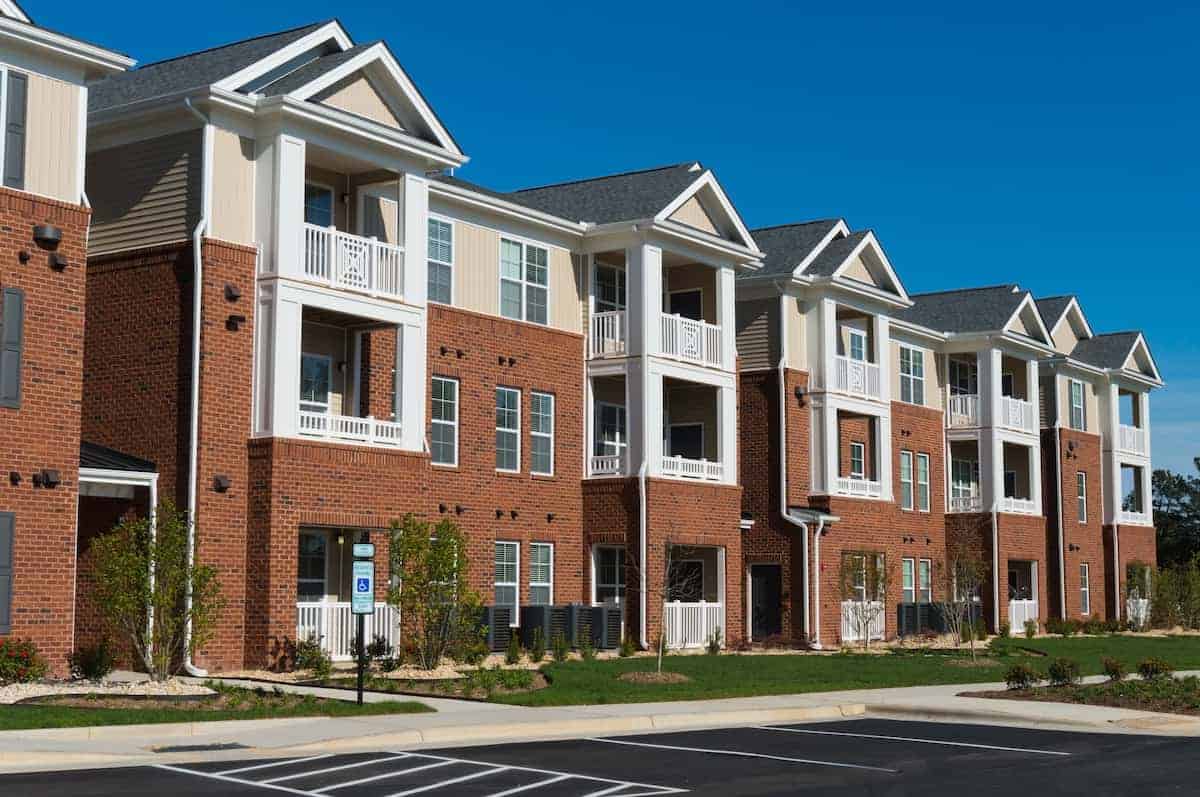
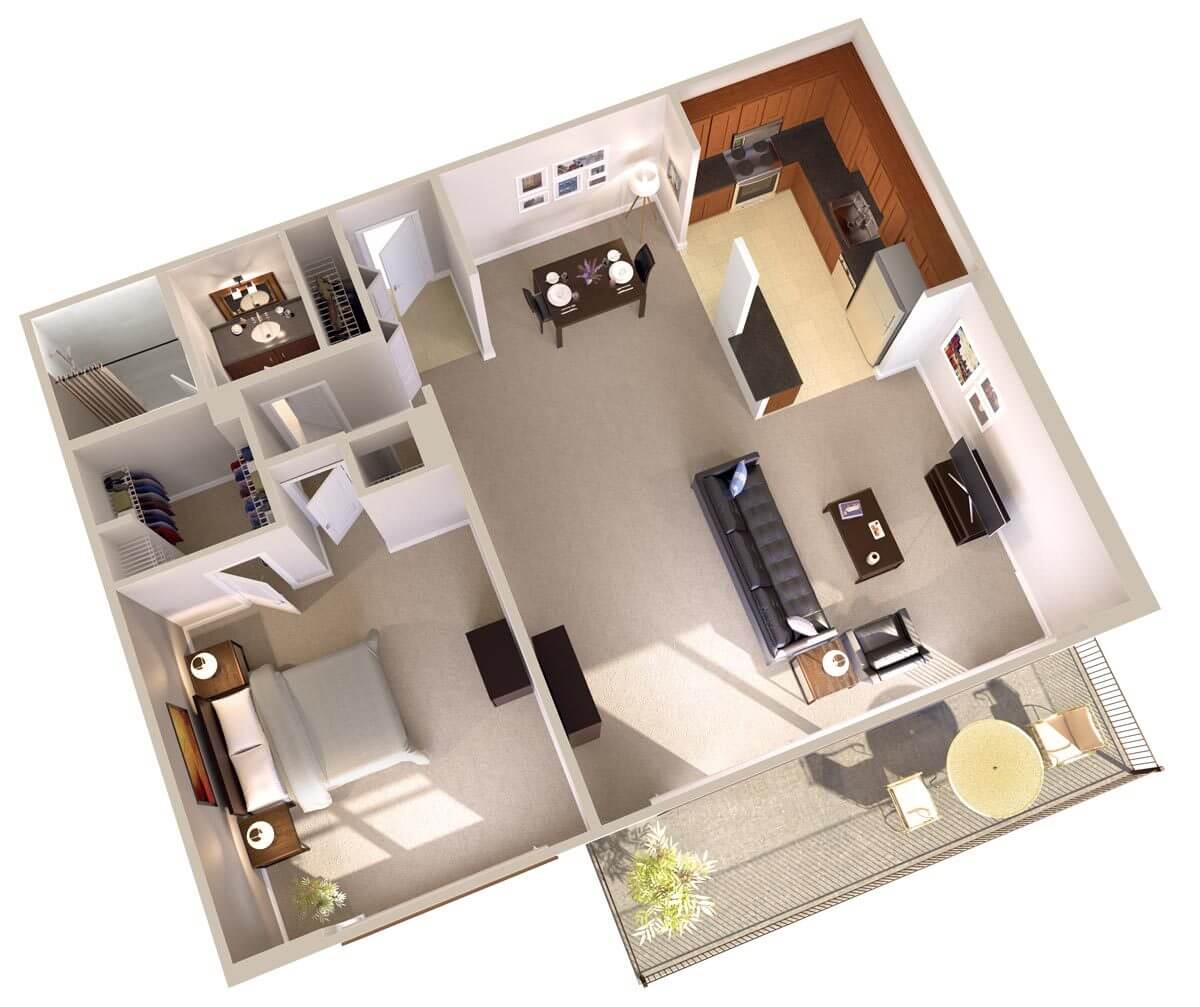
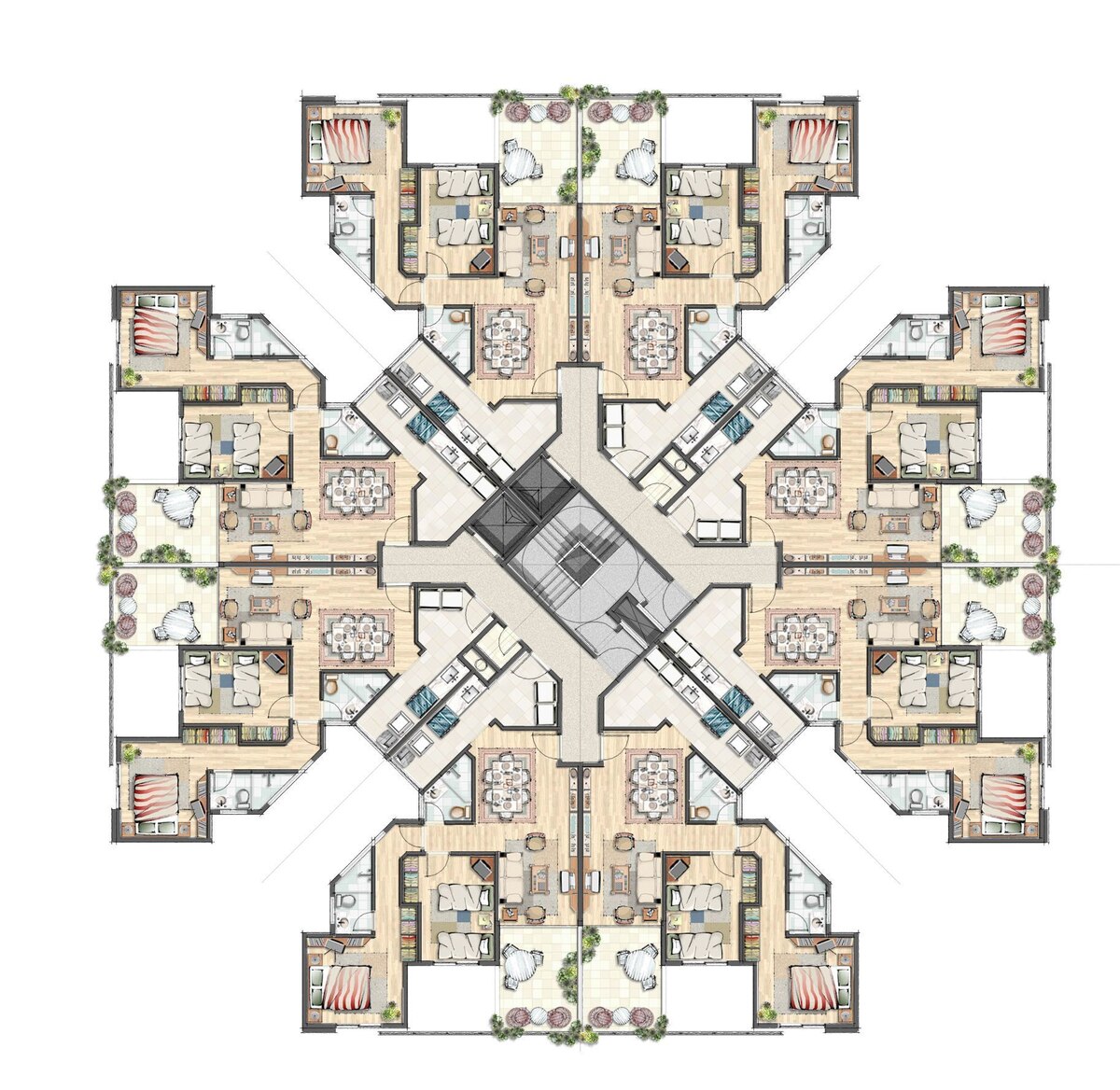

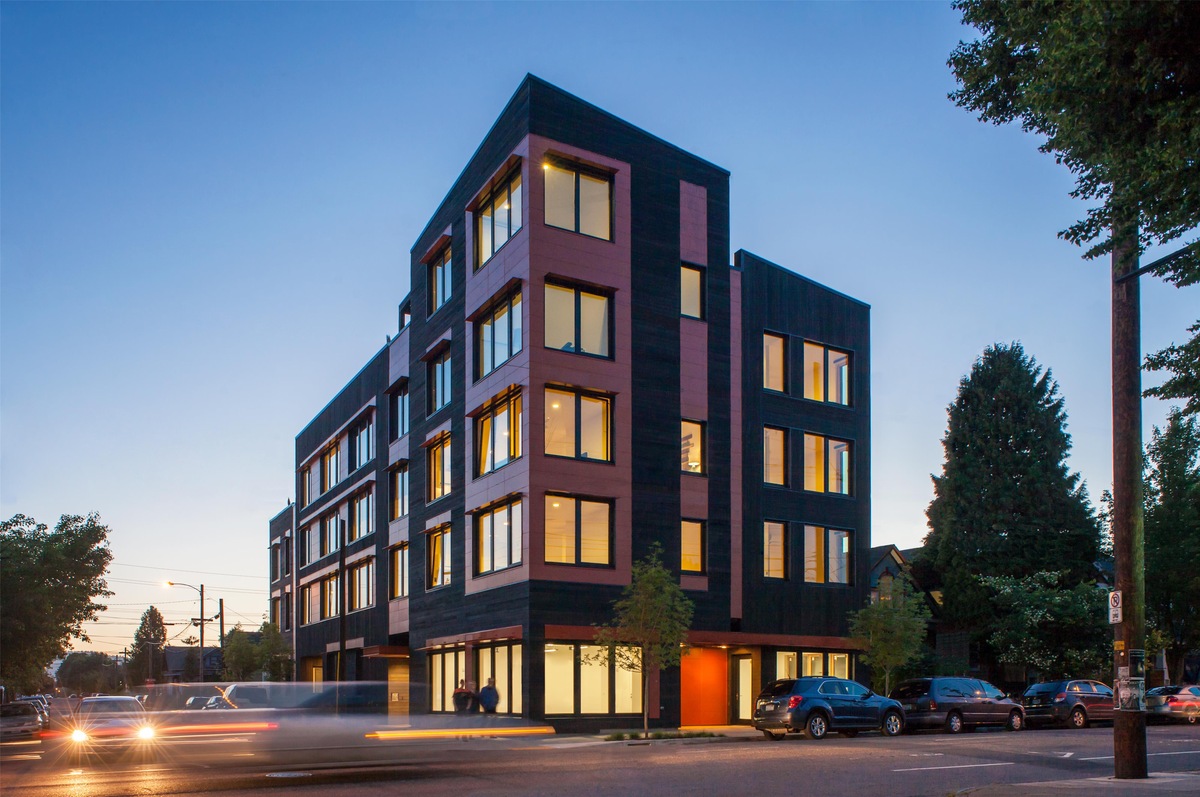

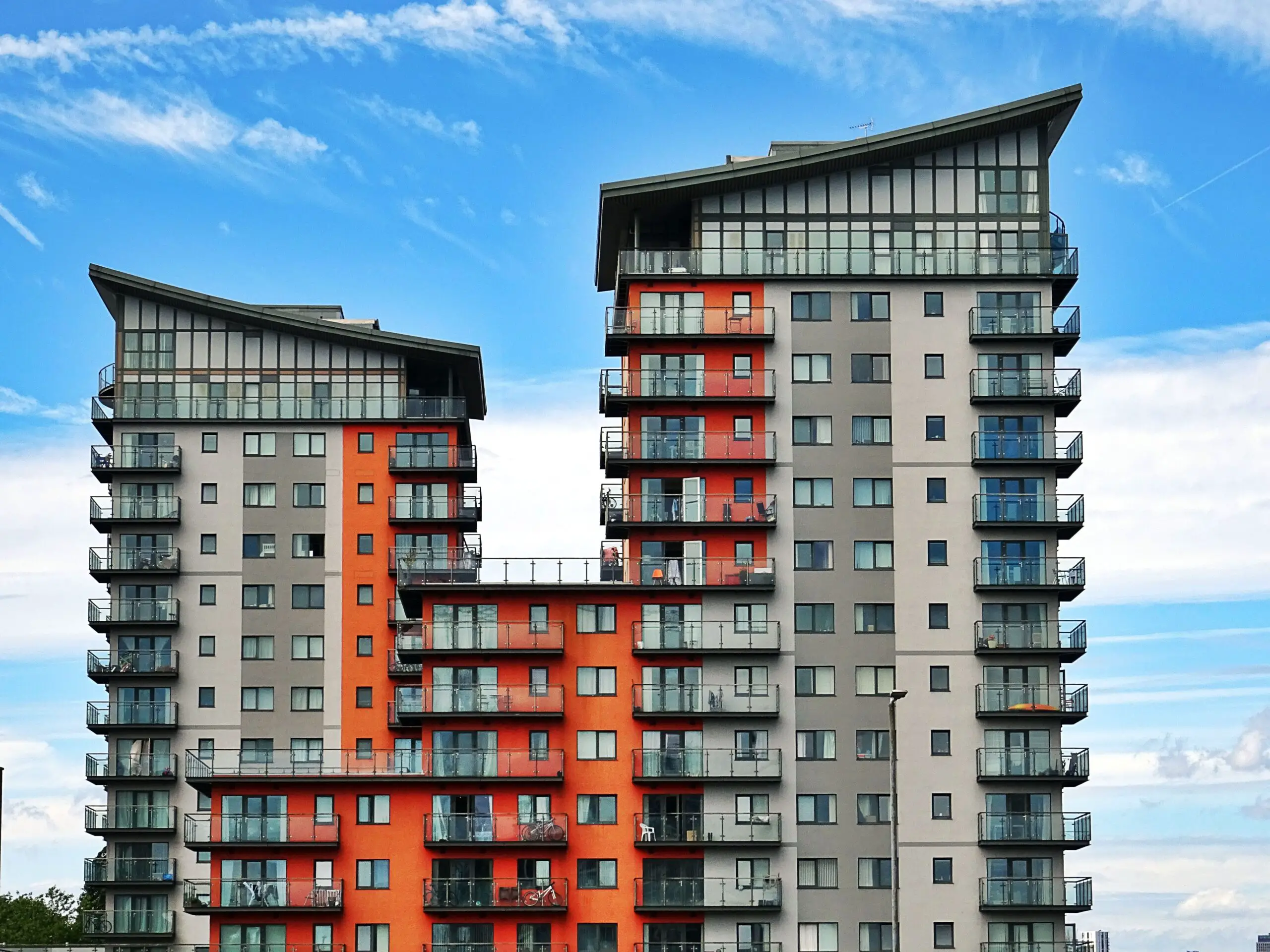
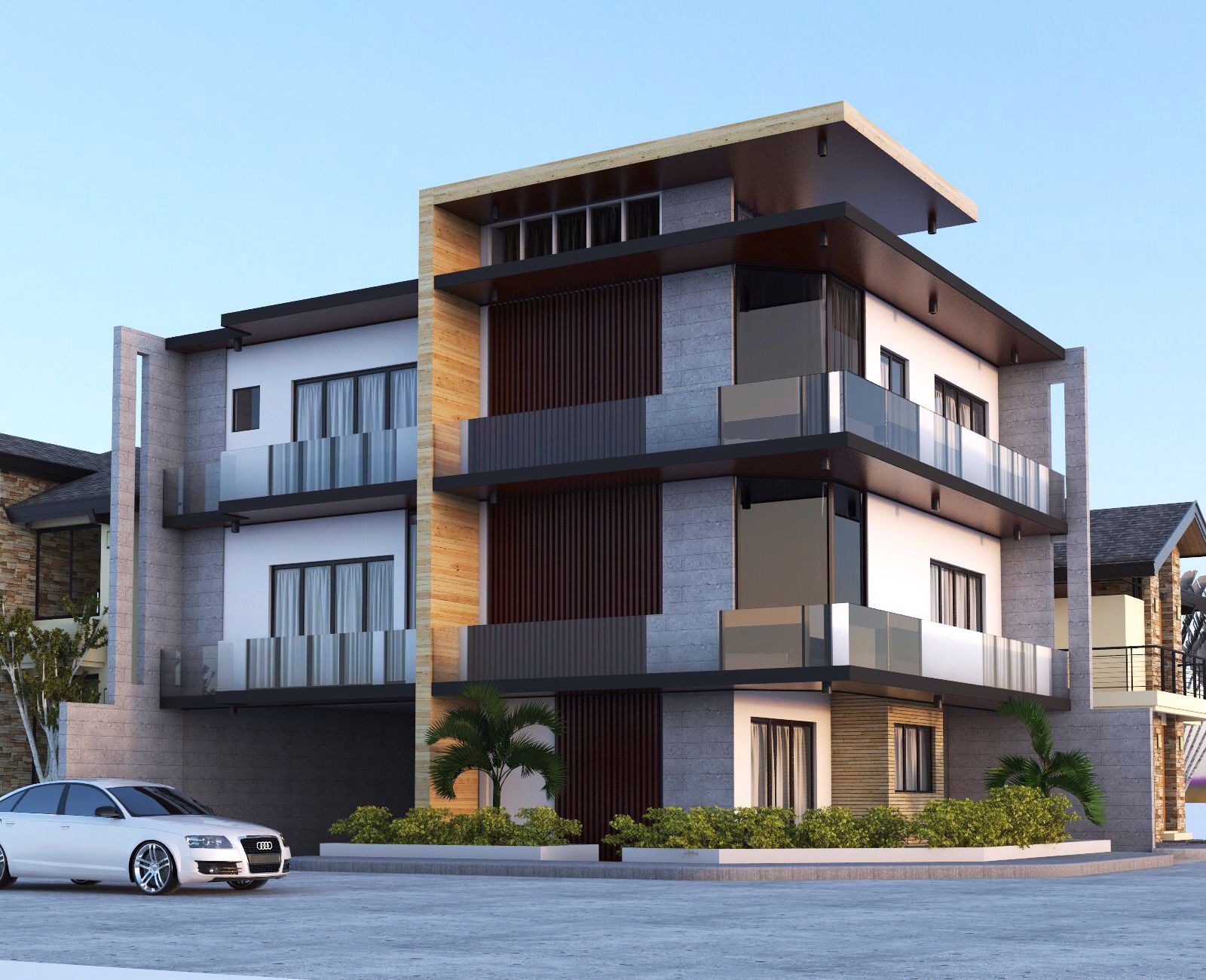

0 thoughts on “How To Buy A Multi-Unit Apartment Building”